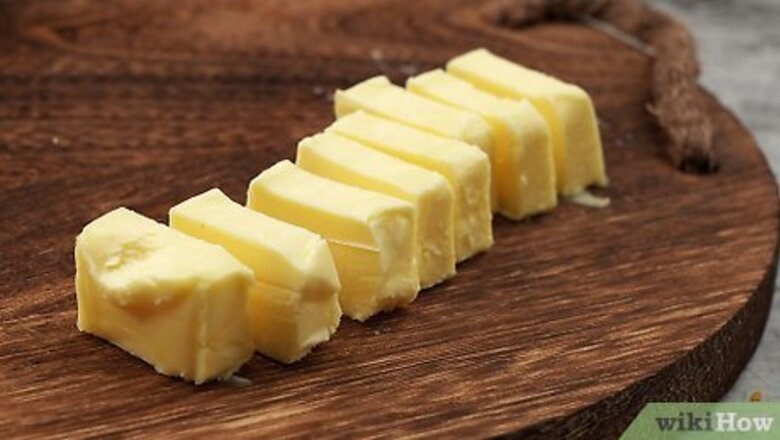
views
How to Melt Butter in the Microwave
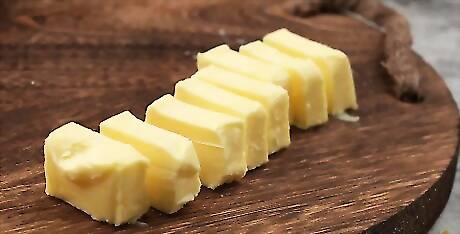
Cut the butter into small pieces. First, determine the amount of butter you need for your recipe (1 stick, a half stick, etc). Once you’ve set apart the desired amount of butter, use a knife to cut it into small chunks. This helps it melt more quickly and evenly. Here are some butter measurement conversions you might need: 2 sticks of butter = 1 cup = 16 Tbsp 1 stick of butter = ½ cup = 8 Tbsp ⅔ stick of butter = ⅓ cup = 5 Tbsp + 1 Tsp ½ stick of butter = ¼ cup = 4 Tbsp ¼ stick of butter =⅛ cup = 2 Tbsp
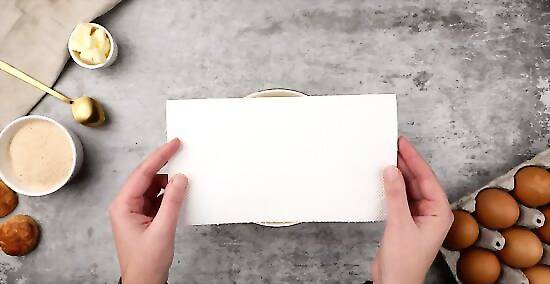
Place the butter in a microwave-safe bowl. Cover the bowl with a paper towel to protect your microwave’s interior from splattering.
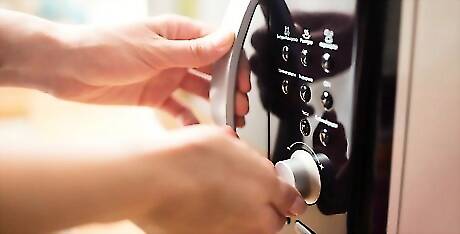
Microwave in 10-second increments until melted. Microwaves are much faster at melting butter than the stovetop, but they're also much more likely to cause burning, separation, or other problems. Start out cautiously by setting the microwave to "low" or "defrost" if possible, then microwave your butter for ten seconds at a time. Check progress between each 10-second interval. The butter will likely not be fully melted within the first few rounds, but it will melt quickly, and you don't want to overcook it. While you’re checking your butter’s progress, stir it to evenly distribute the heat. Continue in this way until the butter is fully melted. Note: remember to remove silverware from the bowl before returning it to the microwave.
How to Melt Butter on the Stove
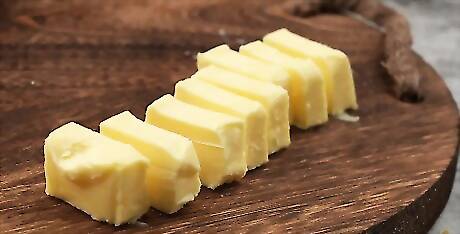
Cut the stick of butter into small pieces. This process starts with the same steps you would take if you were melting butter in the microwave. Measure out the amount of butter you need, then cut this amount into small chunks to speed up the melting process. The more surface area you expose to the heat, the faster the butter will melt.
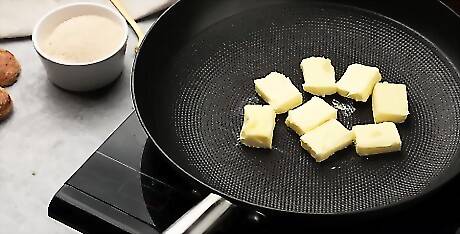
Place the butter in a small saucepan over low heat. Butter melts between 82 and 97ºF (28–36ºC), which is about room temperature on a hot day. Turn the heat on low to avoid heating the butter too far past this point, which can result in burning or smoking.
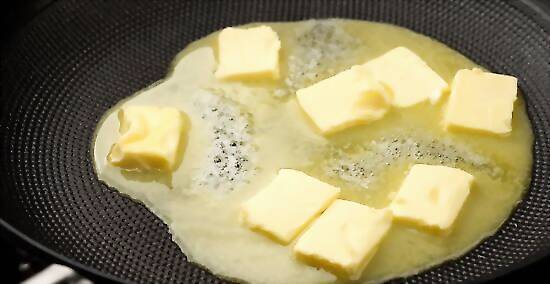
Stir the butter regularly until it’s about 3/4 melted. At this point, turn off the burner and remove the butter from the heat. The butter and pan will still be hot, which should be enough to melt any remaining chunks. Stir until the butter is fully melted and an even consistency. This ensures that you don’t brown or burn your butter, which changes its flavor.

You can also melt butter on the stove using a double boiler. For this method, you need a heat-safe bowl and a pot. First, bring a pot of water to a boil. Next, place small pieces of butter into the heat-safe bowl. Finally, place the heat-safe boil over the pot of boiling water (the steam from the boiling water will be the heat source that melts the butter). Stir until the butter is fully melted, then remove from the heat.
How to Soften Butter
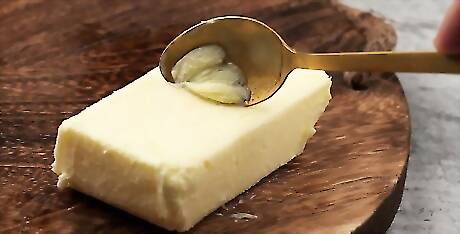
Set the butter out on your counter for 1-2 hours. During this period of time, the butter will come to room temperature. It should have a soft, smooth consistency and be easily squashed by a spoon, but still hold its shape when left alone. Many recipes call for softened butter (rather than cold butter) to ensure that it gets properly incorporated with other ingredients. This is especially common for baking recipes. If you’re short on time, chop the butter into small pieces before leaving it out on the counter. These smaller chunks take less time to come to room temperature, so your softened butter will be ready faster!
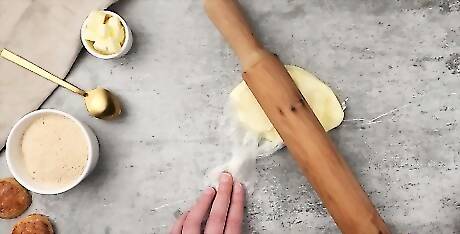
Soften butter more quickly by mashing or beating it. To speed up the softening process, use an electric mixer or mash the butter by hand. Stick the butter in a sealed zip lock bag with most of the air squeezed out. Using a rolling pin, your hands, or any heavy object, roll or mash the butter repeatedly. After a few minutes, the butter should feel significantly softer, without any signs of melting. If you don’t have a zip lock bag, you can also put the butter between two sheets of parchment paper or wax paper before mashing it.
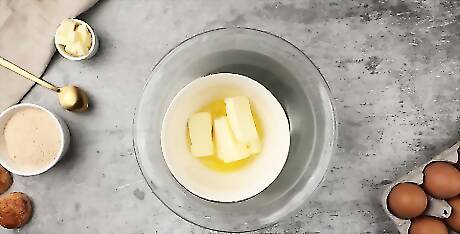
Place a container of butter in a warm water bath. Fill a large bowl partway full of warm (but not boiling hot) water. Put the butter in a sealed zip lock bag or a smaller bowl, and place it in the water bath. Keep a close eye on the butter and poke it occasionally to check the texture, as this method should only take a couple minutes.
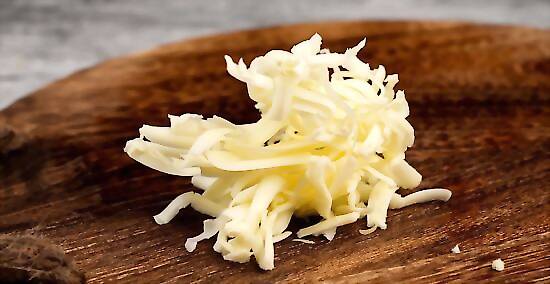
Rapidly soften frozen butter by grating it. If you can't wait for frozen butter to thaw, grate it using a coarse, large-hole grater. The grated shreds of butter should thaw and soften within a few minutes in a warm room.
How to Make Clarified Butter
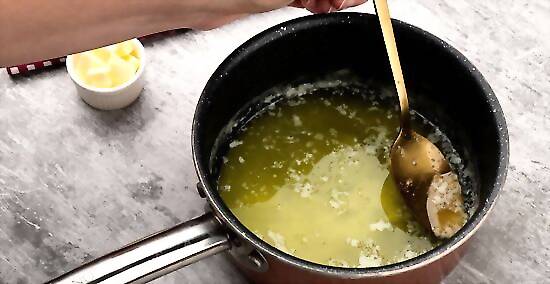
If you frequently use butter to fry food at high temperatures, or you want to extend its shelf life, consider clarifying it. Clarified butter is more resistant to smoking and burning at high temperatures than regular butter. Here’s how to make it: Melt your desired amount of butter in a saucepan over low heat. Eventually, the butter should bubble and become foamy on the top. At this point, remove the saucepan from the heat and allow the butter to cool for 5 minutes. Once the butter has cooled, skim the foam off the surface of the butter, and pour the clear buttery liquid into another container. It should be golden yellow in color. Leave the residue from the milk solids in the saucepan.
How to Make Browned Butter
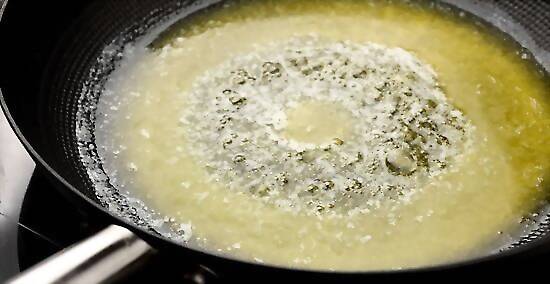
Browning butter involves heating it until it fully melts and starts to change color. Browned butter has a toastier, nuttier, and more caramel-y taste than regular butter. Here are the steps to make it: Cut the butter into small, equal pieces and place in a skillet. Cook the butter over medium heat, swirling the pan and stirring occasionally so the butter melts evenly. Let the butter bubble gently as it cooks. If it seems like the butter is cooking too fast or boiling, lower the burner’s heat. When the butter turns a golden brown color and starts to smell nutty and toasted, it’s ready! Remove from the burner and immediately transfer the butter into a heat-safe bowl to avoid overcooking.
Ways to Use Melted Butter

Use it as a sauce, dip, or topping. Melted butter has a rich, delicious flavor that compliments all kinds of foods. Many people enjoy dipping lobster in melted butter, or using it as a topping for baked potatoes. Others enjoy tossing steamed veggies in melted butter for some added flavor, or drizzling it over popcorn for a classic movie-theater treat. The options are endless! Melted butter can also be a base for delicious sauces, such as this garlic butter sauce, and this white wine cream sauce.
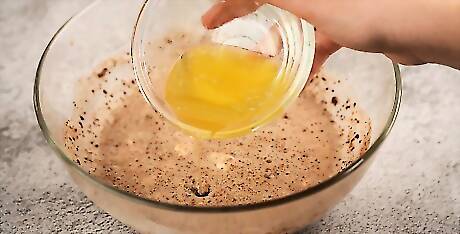
Use it in baking recipes. Some baking recipes call for melted butter (rather than cold or softened butter). Melted butter adds richness, and it’s easier to work with if you’re a beginner baker because it blends easily with other ingredients. Baked goods made with melted butter tend to be thinner, flatter, and crispier.
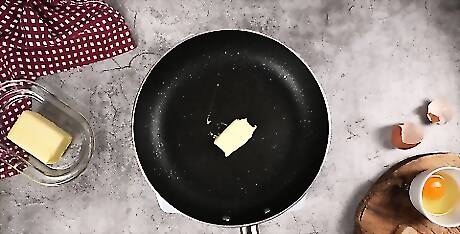
Use it as a cooking oil. If you’re sauteing veggies, browning thin pieces of fish or meat, or caramelizing onions, melted butter makes a great cooking oil. It adds a delicious, rich flavor that elevates any dish! Just make sure to use low to medium heat while you cook to avoid burning the butter, since it has a lower smoke point than other cooking oils.











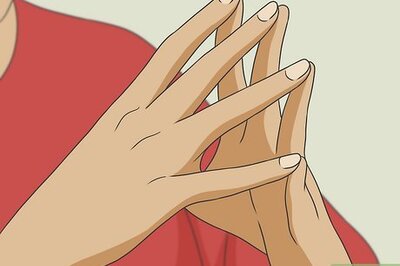








Comments
0 comment